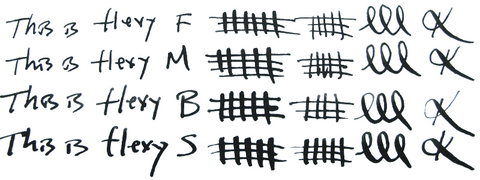Danitrio Phoenix Maki-E w/ Black Background on Hyotan Fountain Pen
Starting at $750/mo for 6 month no-interest installments, 10% down using 
Learn about our Payment Relief Plan. |
|---|
Couldn't load pickup availability
✓ 100% Genuine Urushi
✓ Hand-painted by highly-trained Japanese Artisans
This striking pen celebrates the phoenix, a revered symbol of renewal, immortality, and grace. In Japanese culture, the phoenix also represents the imperial household, embodying power, strength, and prosperity.
The majestic phoenix is rendered in golden maki-e, with shimmering raden (mother-of-pearl) accents highlighting its eye and flowing tail feathers. The deep black urushi lacquer background enhances the phoenix’s brilliance, while vivid red urushi details add boldness and vitality.
A timeless emblem of transformation and resilience, this pen is a masterpiece of Japanese artistry and mythological tradition.
About Danitrio Hyotan Fountain Pen Series:
The Hyotan in Japanese means "Gourd" or "Calabash", which is a fruit that can sometimes come in an hourglass shape. This series of pen does come in the hourglass shape; in the US, collectors of Danitrio pens have coined it the Mae West, one of the biggest Hollywood stars in the twentieth century known for her hourglass figure.
Nib Details:

This pen is furnished with an 18k Gold, two-toned #6 nib. What has been described by many Danitrio collectors as the fireball nib is an image of “Kaen-Kohai” which is a flame-shaped halo of “Fudo Myoo” (Acala, the God of Fire). This halo is commonly painted on the back of Japanese Buddhist statues.
An UrushiPen.com representative will contact you to confirm nib tip size preference (fine, medium, broad, or stub) following the placement of the order.

Technical Specification:
| Cap Length | 65 mm (2.56") |
| Cap Diameter | 21 mm (0.83") |
| Barrel Length | 110 mm (4.33") |
| Barrel Diameter | 19 mm (0.75") |
| Pen Length (Closed) | 147 mm (5.79") |
| Pen Length (Posted) | Cap does not post |
| Net Weight | 35.5 g (1.25 oz) |
| Net Weight (w/ink) | 37.2 g (1.31 oz) |
| Filling System | Cartridge/Converter |
About the Artist:

This pen was hand-painted by Koichiro Okazaki (Kogaku). Born in 1959. He is a renown Maki-E artisan in Japan and considers himself wholeheartedly traditional when it comes to Maki-E. He is recognized by the Japanese Government as a Dento Kogei-shi, which an honorary title meaning "master of traditional crafts" and is given only to a select few artisans who have a significant contribution to their craft. Many of his Maki-E works have been accepted and rewarded at national art exhibitions. He had learned Maki-E from a master and became an independent artisan 5 years later. He was recognized with Kao (authorized monogram) by Kuda Munenori of Sado Omote school in 1991. He performs Maki-E on many traditional accessories, hair pins, combs, jewelry, and fine writing instruments.




